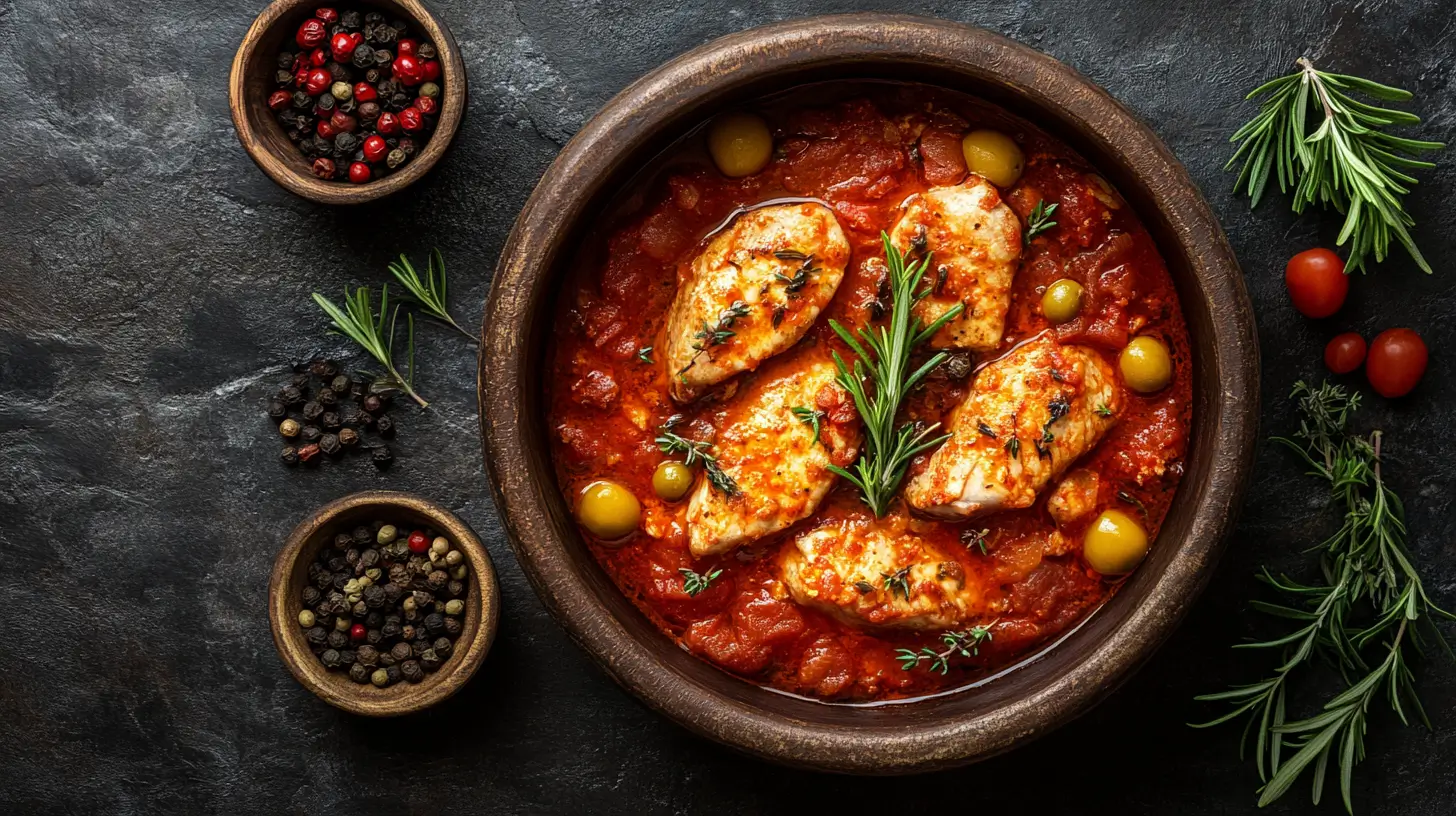- Home
- How to Use a Slow Cooker for Pork Chops
- How to Use Fresh Herbs in the Slow Cooker Without Losing Flavor
How to Use Fresh Herbs in the Slow Cooker Without Losing Flavor
How to Use Fresh Herbs in Slow Cooker: Tips for maximizing flavor in soups & stews, best herbs to choose, and timing for adding fresh herbs.

Unlocking the Secrets of Fresh Herbs in Your Slow Cooker
There's something about coming home to the delightful aroma of a slow-cooked meal. It’s like a warm hug from your kitchen. But if you’ve ever felt disappointed that your stew or soup was missing that bright, fresh zing you crave, it might be because you've not yet mastered the art of using fresh herbs in the slow cooker. Let's dive into the world of herbs and find out how to keep their flavors vibrant, even after hours of cooking.
Understanding Herbs and Slow Cooking
The slow cooker is a marvelous invention, allowing us to toss in ingredients in the morning and return to a ready-to-eat meal by dinner. However, the prolonged cooking times and low temperatures can be a double-edged sword, especially for delicate ingredients like fresh herbs. Where dried herbs thrive in these conditions, fresh herbs often lose their bright notes and become a shadow of their vibrant selves.
But don’t be discouraged. There’s a proper way and time to add these magnificent flavor enhancers to ensure they impart their utmost taste and benefits.
Choosing the Right Herbs
Before we get into the "how," it's crucial to pick the right "what." Not all herbs are created equal in the context of slow cooking. Here’s a quick guide:
- Woody Herbs: These are your best bets for longer cooking times. Think rosemary, thyme, bay leaves, and oregano. They have sturdier leaves and stems that hold up well to extended cooking.
- Soft Herbs: These should generally be added toward the end of cooking. This category includes basil, cilantro, parsley, and dill. They are much more delicate and can lose their flavors quickly under prolonged heat.
Now that you know which herbs to use, let’s talk about how you can use them effectively in your slow cooker meals.
Strategic Addition of Herbs
Adding herbs at the right time is crucial in a slow cooker. Here's how to maximize flavor based on the cooking duration:
- Long-Cooking Dishes: For dishes that need to simmer for several hours, add woody herbs at the beginning. Their flavors hold up and can permeate the dish wonderfully over many hours.
- Short-Cooking Dishes: If the dish cooks for a shorter period (3-4 hours), you can add softer herbs in the last hour of cooking. This method protects their flavors, ensuring they are bright and present at the time of serving.
Another tip is to add a fresh burst of herbs right before serving. Even if you put herbs in at the beginning, adding a final sprinkle of fresh herbs can elevate the taste and bring a fresh dimension to your dish.
Making the Most Out of Your Herbs
Here are a few additional tips to ensure your herbs contribute the most to your slow-cooked meals:
- Chop Properly: Larger pieces can handle longer cooking times better than finely chopped herbs.
- Layering Flavors: Combine both fresh and dried versions of the same herb for a more complex flavor profile. Add the dried version at the beginning of cooking and the fresh version at the end.
- Use Oil: Sometimes, gently bruising the leaves and mixing them with a bit of oil before adding them can help preserve their flavor.
Incorporating these small steps will surprise you as they bring out the robustness of the herbs, even in the gentle simmering heat of a slow cooker.
Recipe Ideas to Get You Started
Excited to try some of these tips? Stir up your slow cooking game with these herb-infused recipe ideas:
- Rosemary Lamb Stew: Woody rosemary releases its flavors over the long cooking period, mingling with the rich tastes of lamb and root vegetables.
- Lemon Basil Chicken: Add a flurry of fresh basil in the last hour of cooking to capture its fresh, aromatic flavor alongside the zestiness of lemon.
Each recipe can benefit from the meticulous addition of herbs, transforming from a simple slow-cooked meal to a fragrant, flavorful feast.
Final Thoughts: Bring Your Slow Cooker to Life
Harnessing the power of herbs in slow cooking isn't just about throwing them into the pot and hoping for the best. It's about thoughtfully integrating them at the right times to maximize their flavor profile. Remember, slow cookers are incredible for developing depth and complexity in your dishes—adding herbs properly only enhances these qualities.
So the next time you set up your slow cooker, think of it as an opportunity to experiment with these herbal techniques. Not only will it make your dishes taste better, but it’ll also fill your kitchen with the most delightful aromas—sure to make anyone feel at home.
Now, are you ready to elevate your slow-cooked meals with the magic of fresh herbs? Grab your slow cooker, pick your herbs, and let the culinary magic begin!



